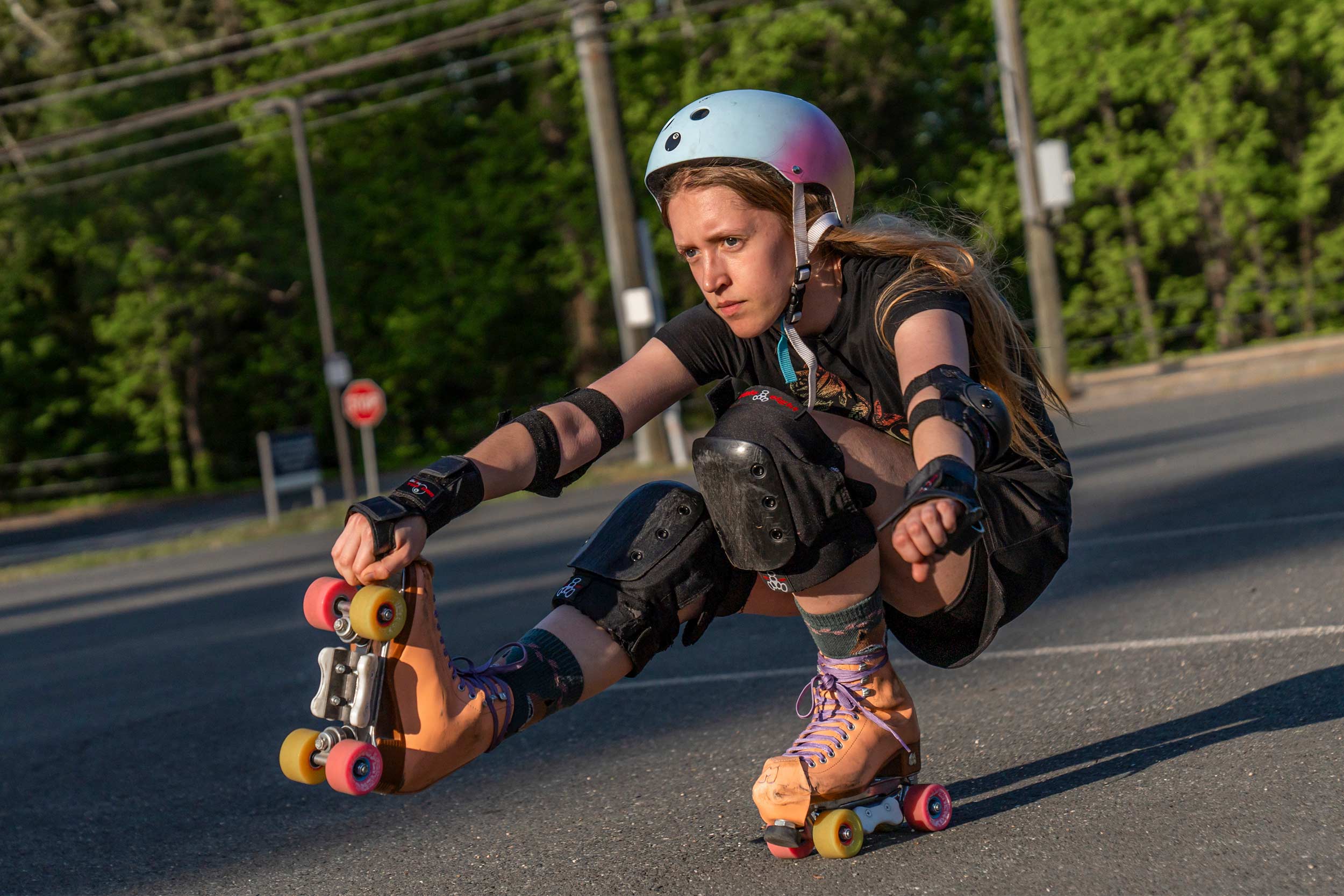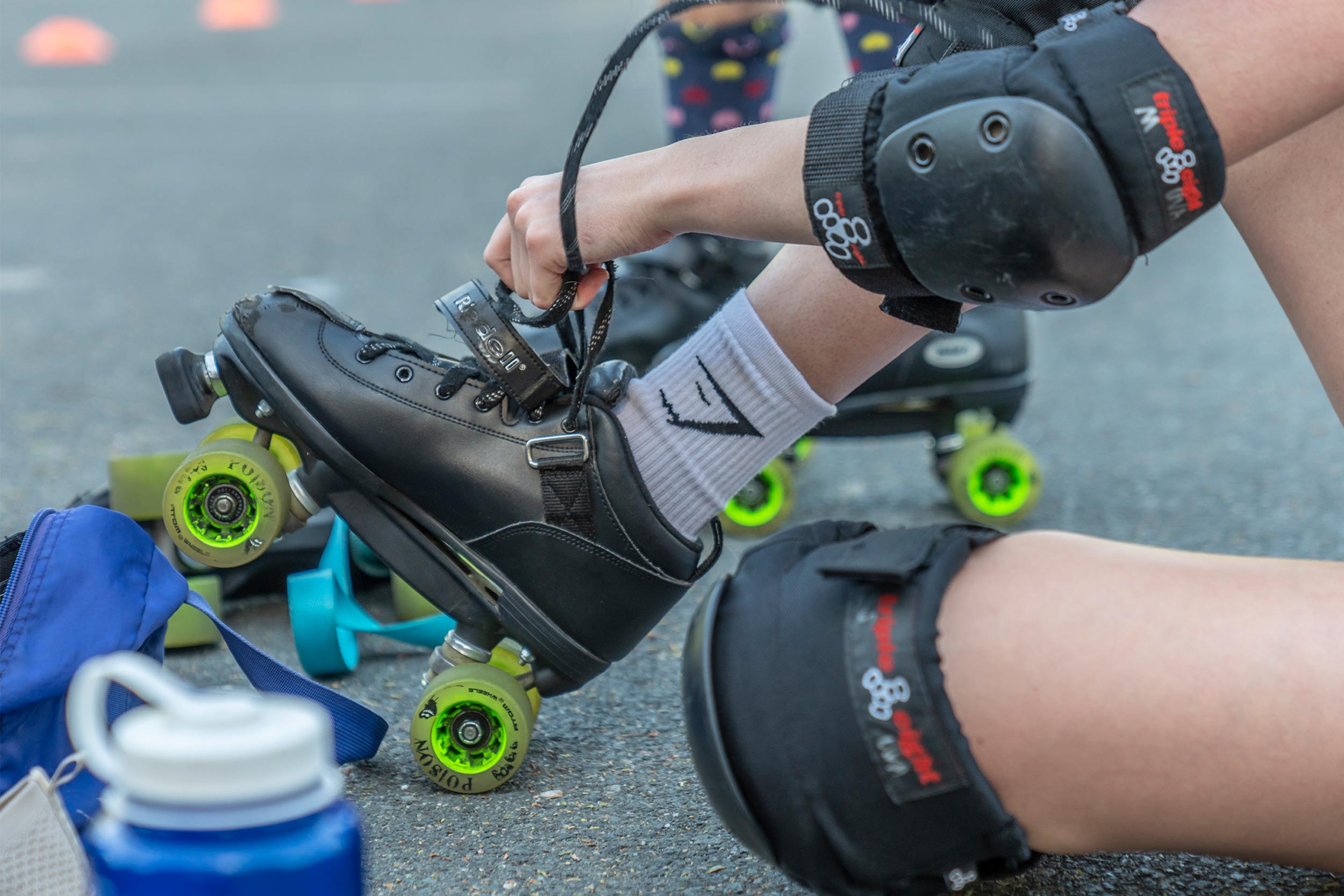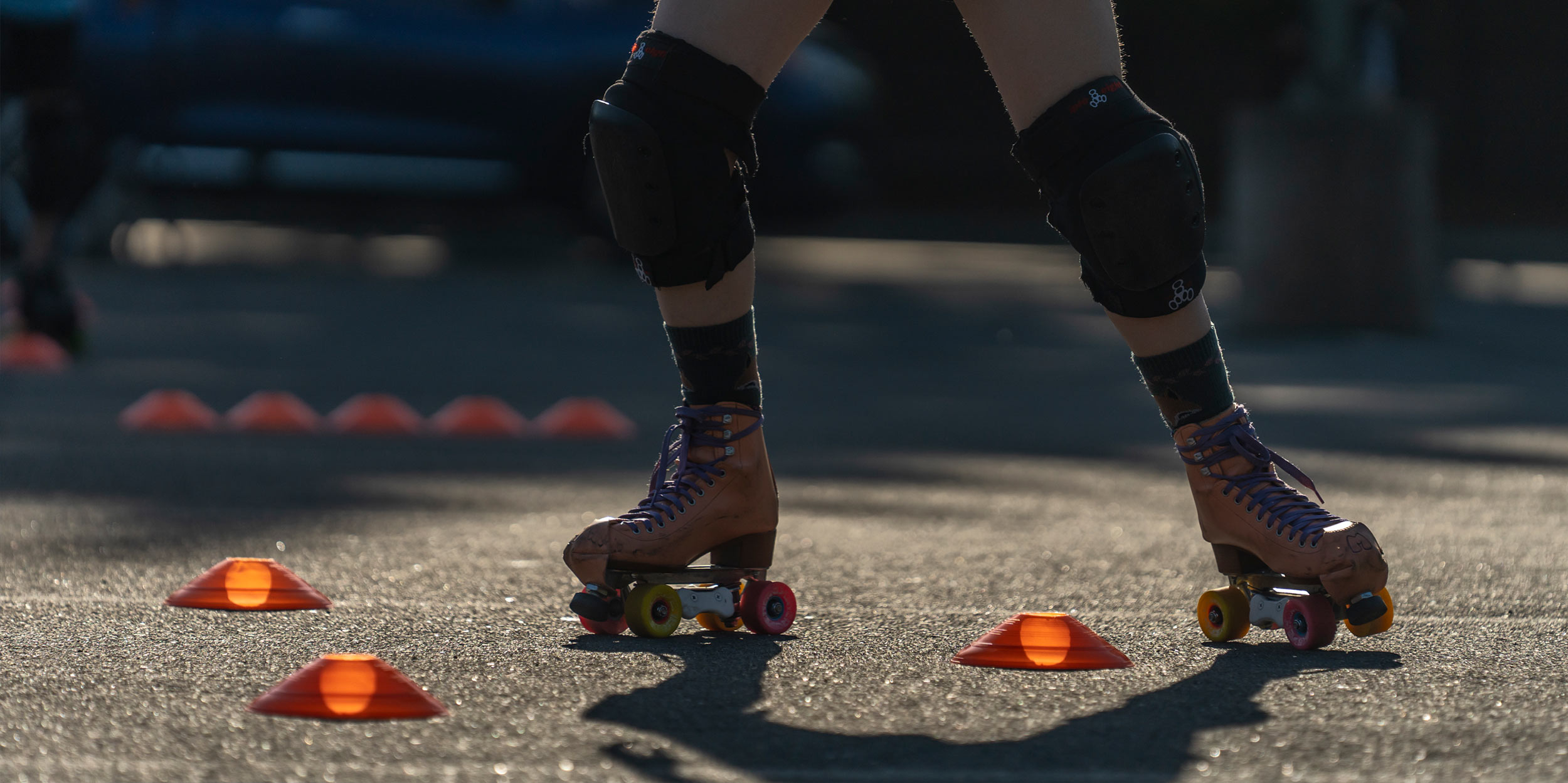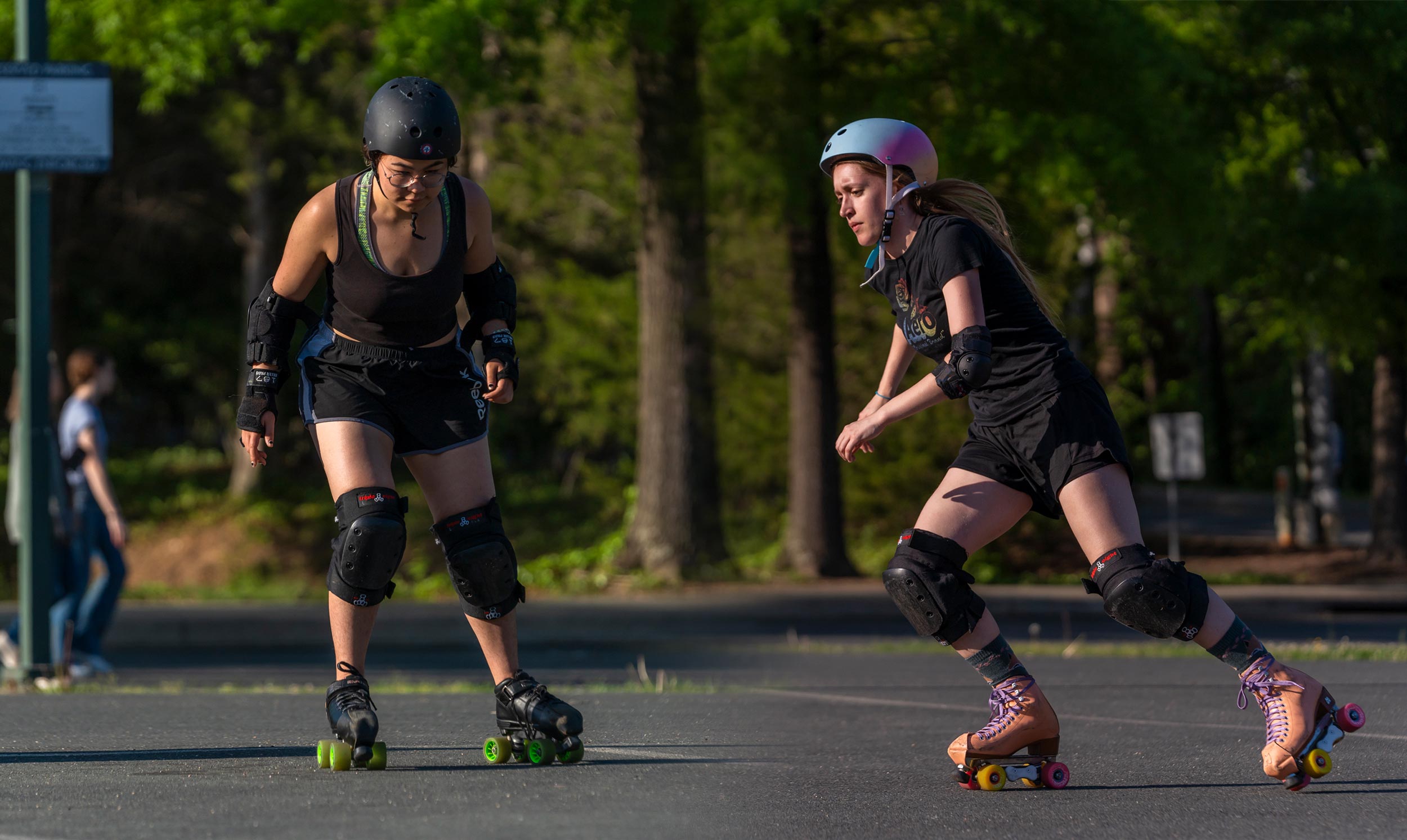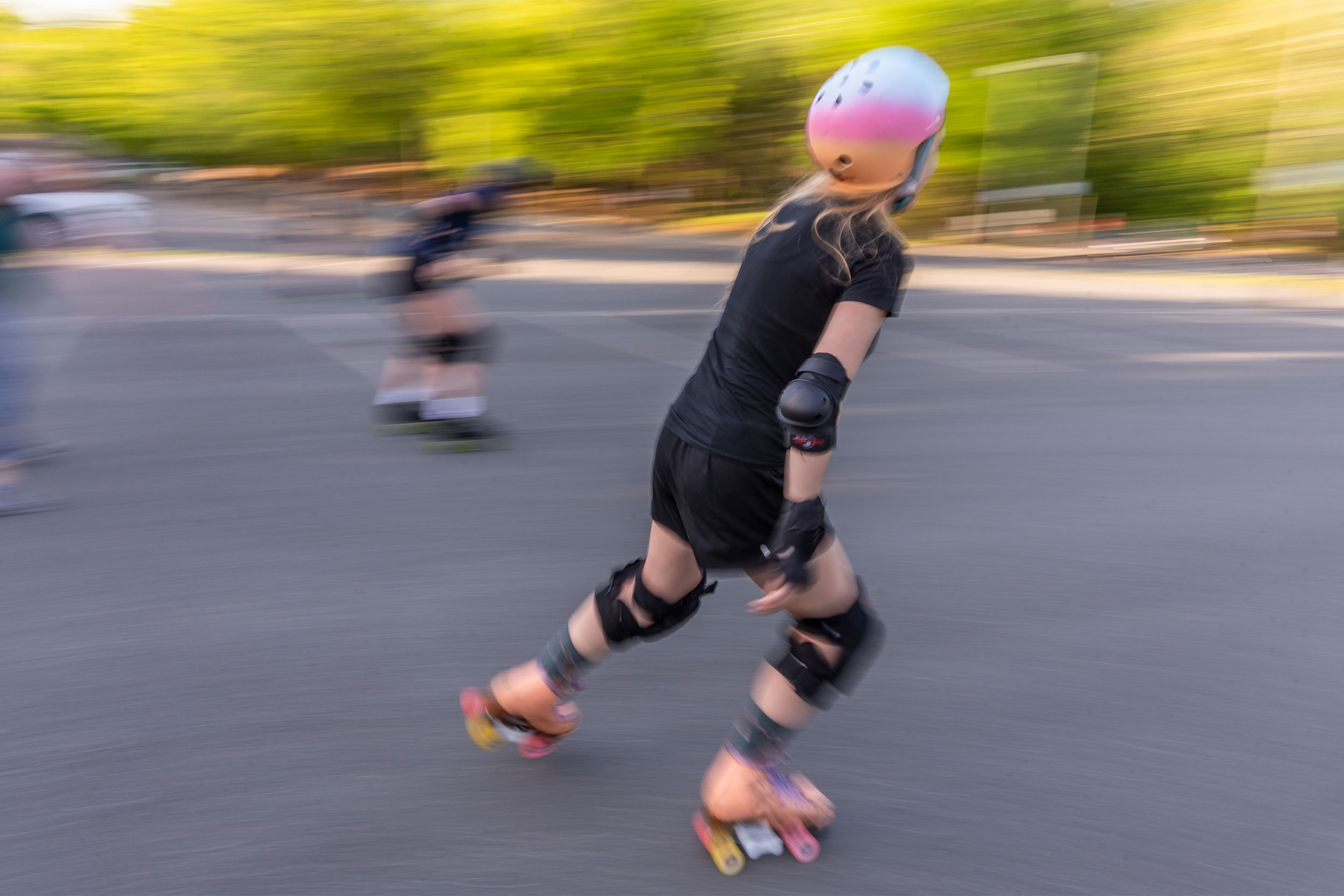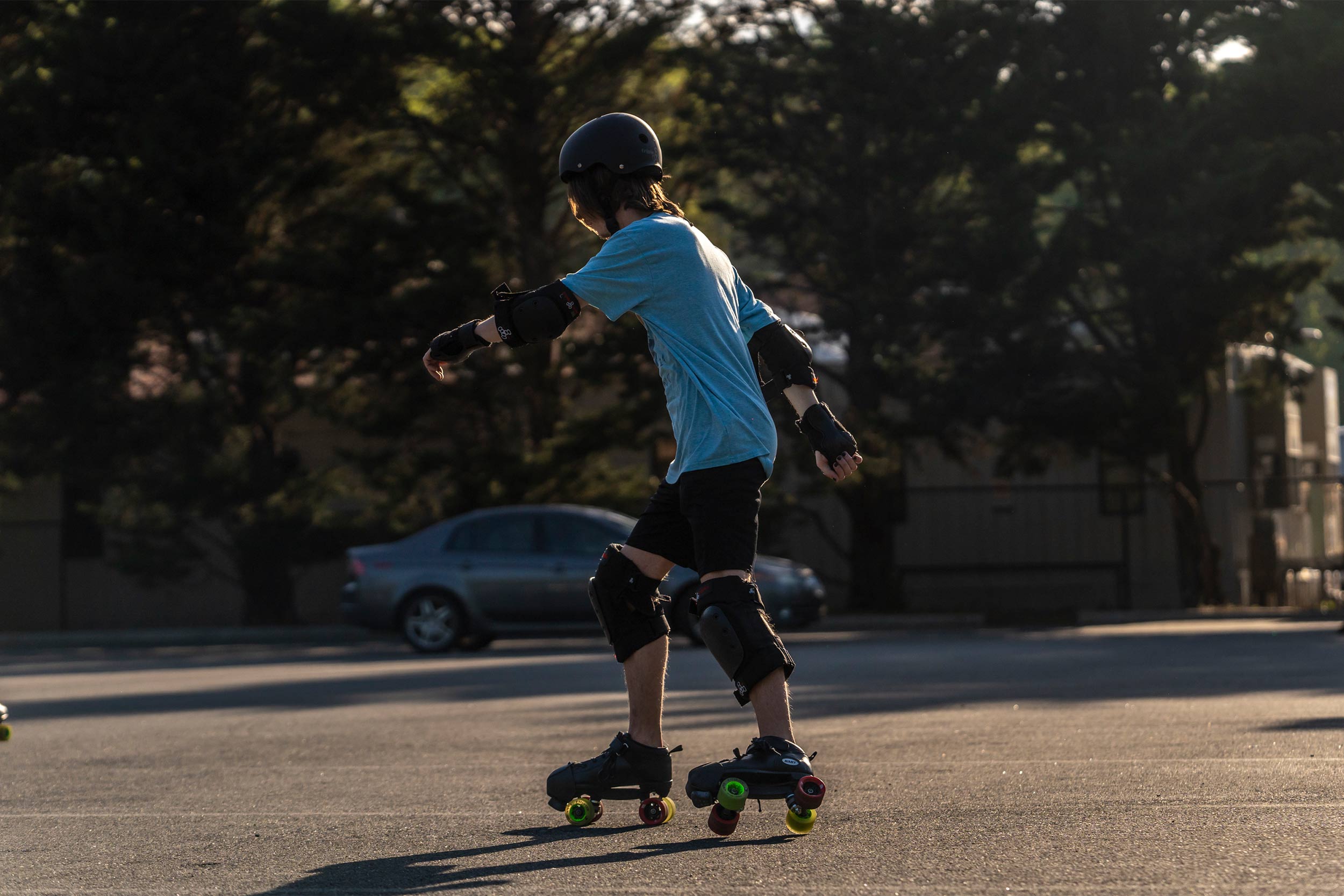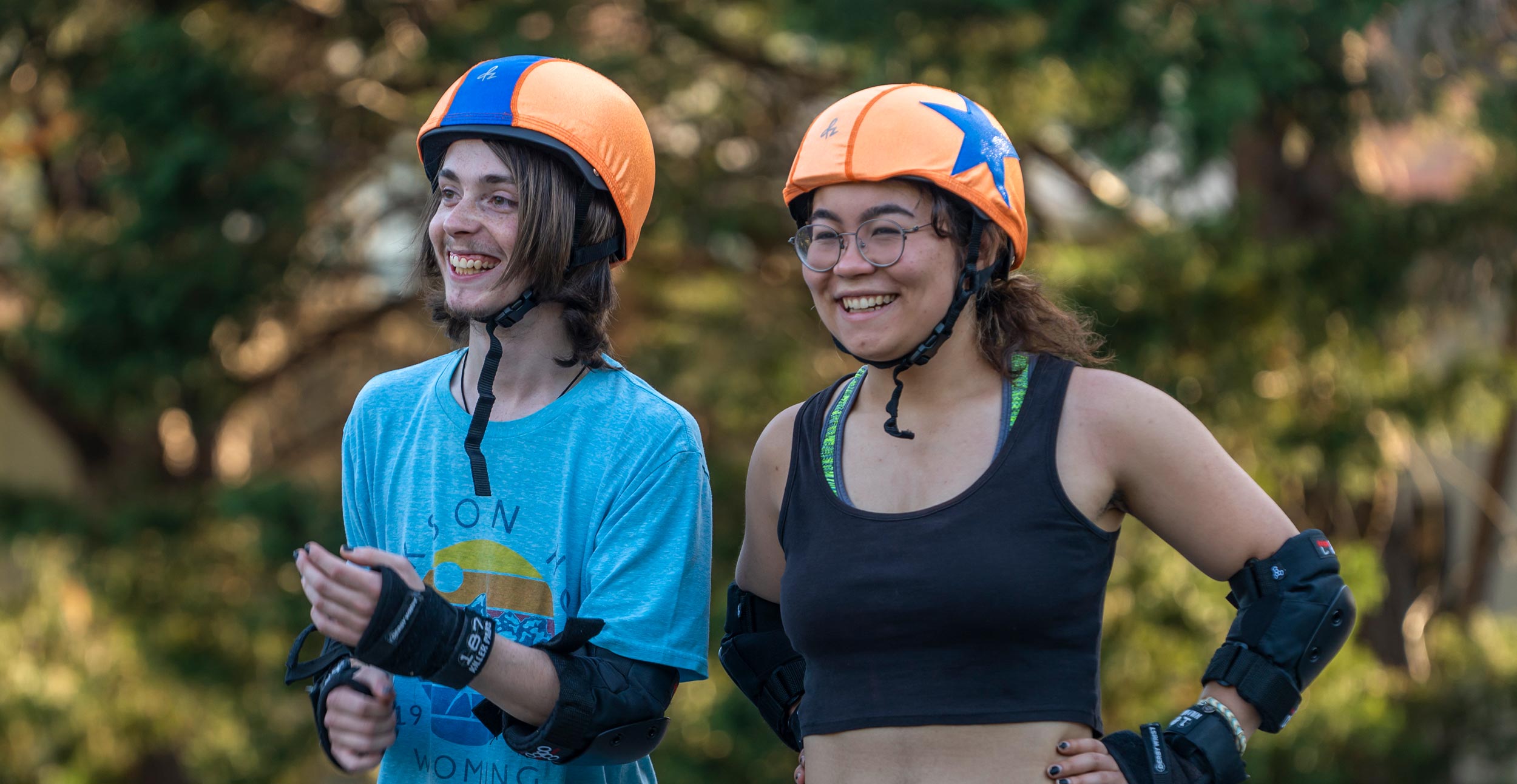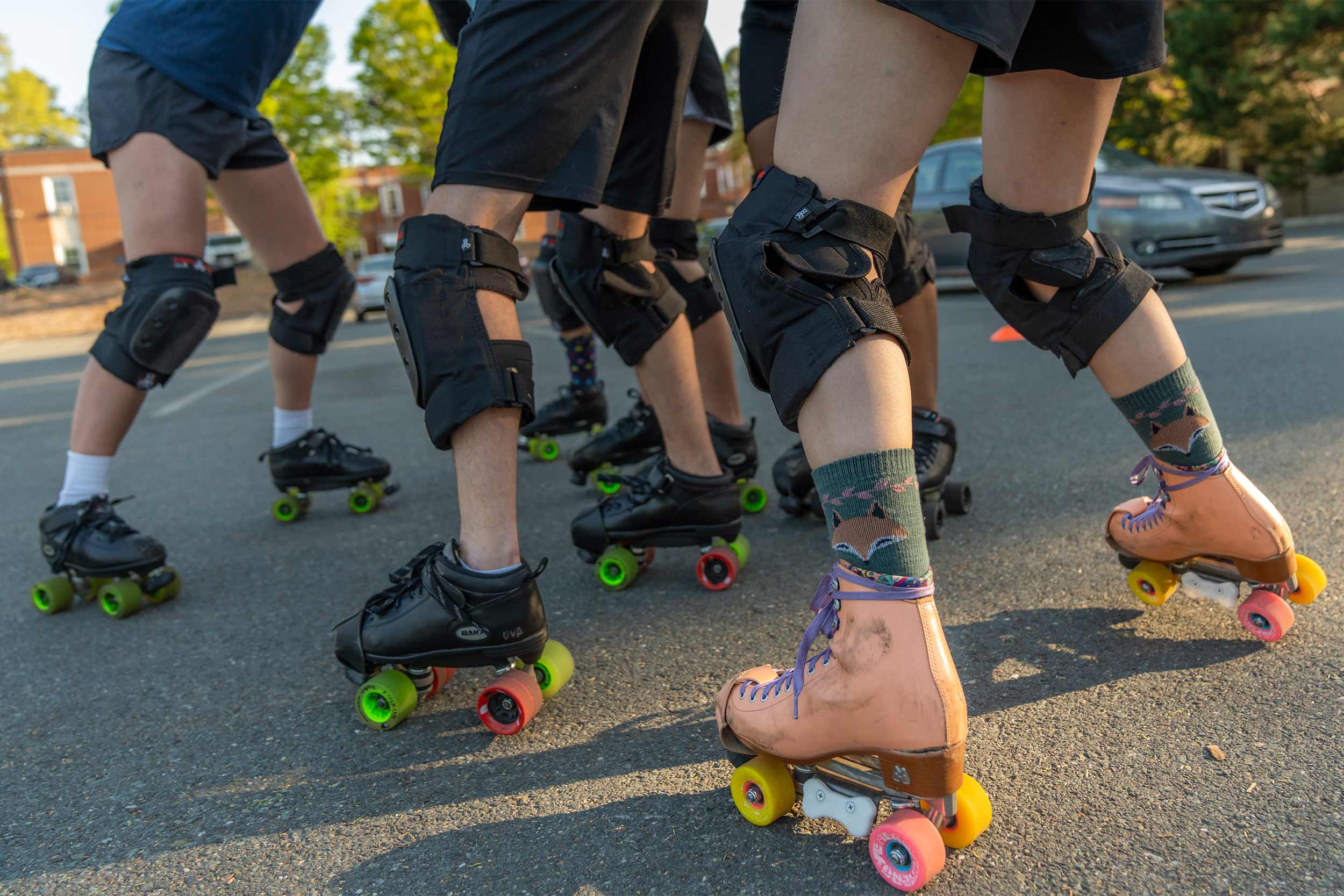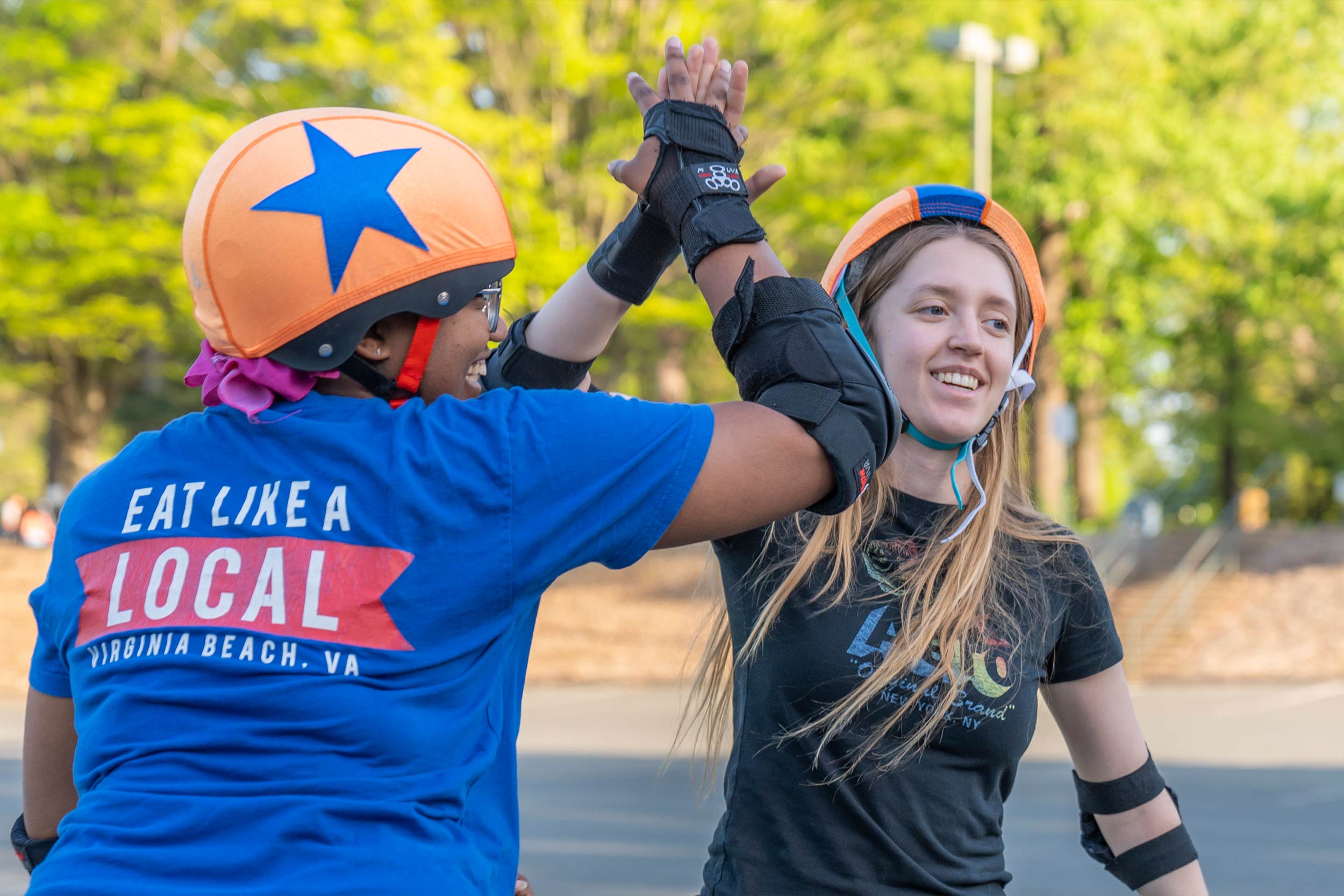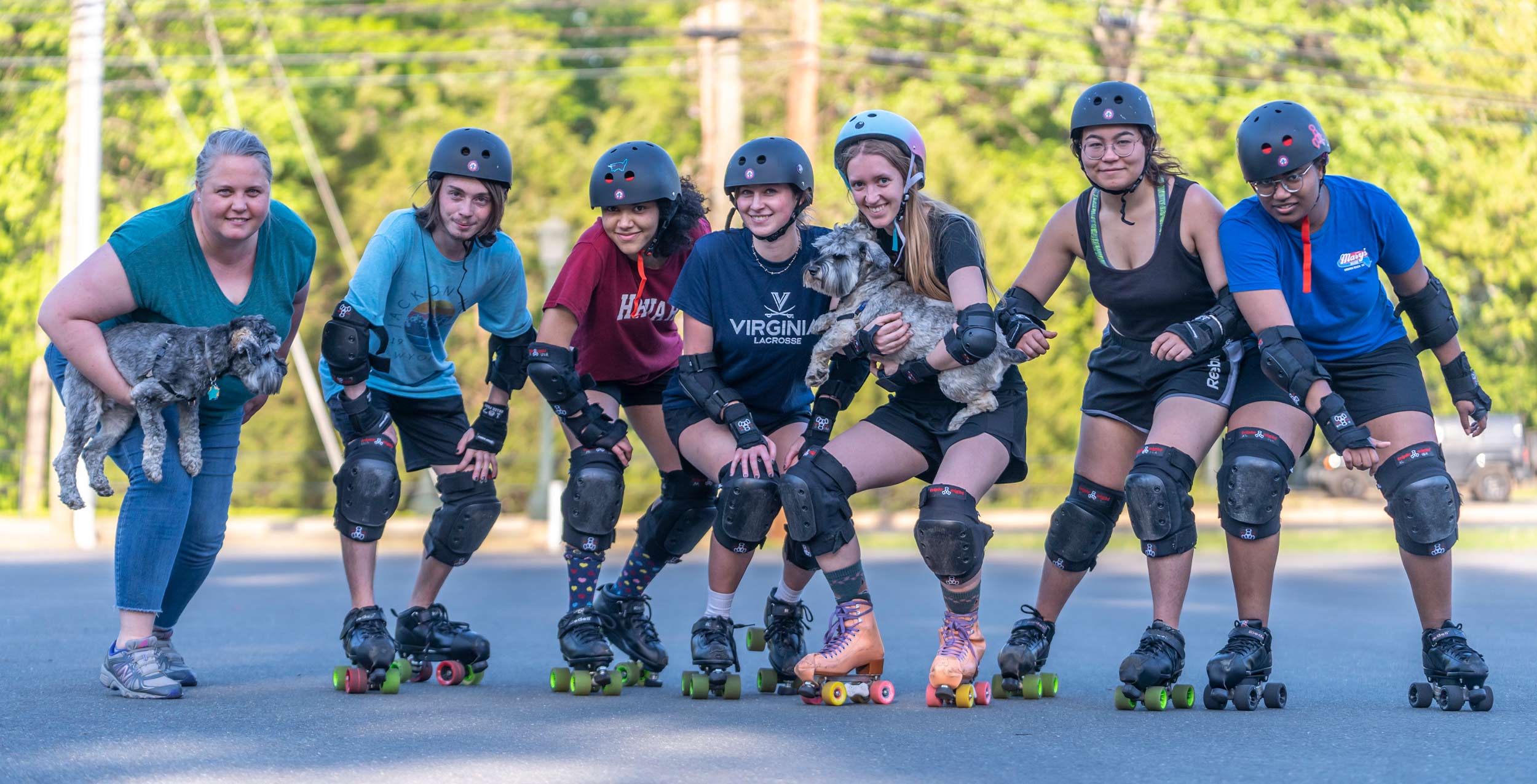What has 10 legs, 40 wheels and one goal?
A roller derby team. And University of Virginia students are part of a team in training.
Roller derby is a fast-paced, competitive, five-member team sport on roller skates, contested on an oval track, that relies on a combination of physical contact and strategy. Each team has four blockers and a jammer, who scores points by passing opposing blockers, on the track at one time.
“Jammers are usually very fast and agile skaters,” said Whitney Richardson, coach of Roller Derby at UVA, an independent student organization that trains skaters. “Blockers are working offense and defense at the same time. They are trying to block the other jammer, but also let their jammer through. It is a delicate dance of getting around people.”
Roller derby was invented in the 1930s by an entrepreneur who turned marathon roller skating into a combative game, and teams sprang up around the country. The sport’s popularity ebbed for a few decades, but experienced a revival in the early 2000s. But more recently, the COVID-19 pandemic shuttered several teams including the local one, Charlottesville’s Derby Dames. That program is in the process of rebuilding and rebranding.
